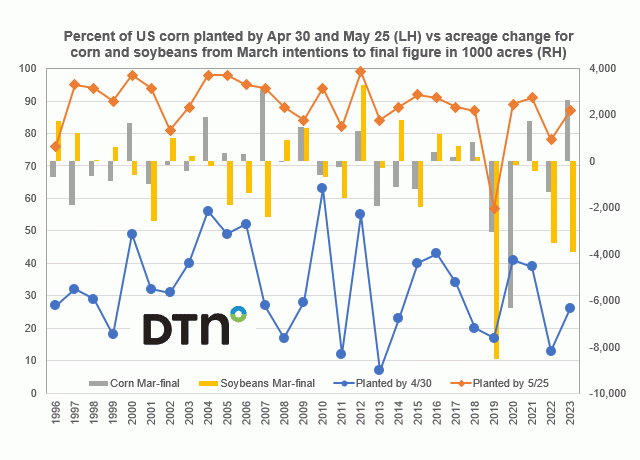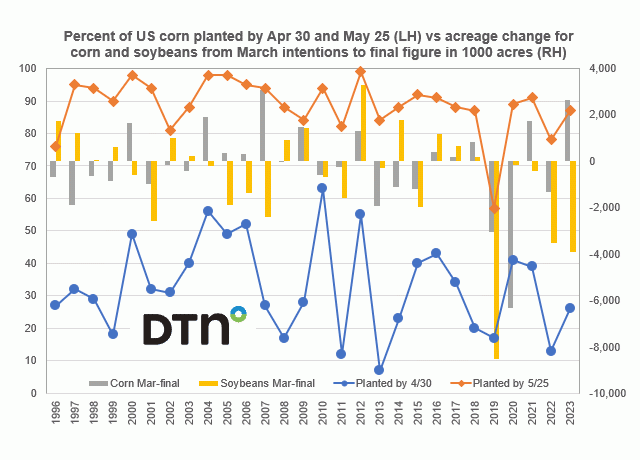Fundamentally Speaking
Final Acreage Figures vs. March Intentions
The March prospective planting figures are just the starting point for corn and soybean planted area pending how fast spring seedings proceed as one can say the start of U.S. growing season begins next week.
That will steer trade along with the finish of the South American growing season, global demand particularly as it pertains to China, and the impact from the outside markets especially crude oil, the dollar and interest rates on how they influence the grain and oilseeds complex.
P[L1] D[0x0] M[300x250] OOP[F] ADUNIT[] T[]
As we have witnessed over the past few seasons, Mother Nature can have a large say in whether farmer intentions turn into reality as we have seen big changes in both corn and soybean planted acreage from the March intentions into the June Acreage report, and then from there to the final figures given in the annual production report based on the vicissitudes of weather.
This chart shows the percent of U.S. corn planted by April 30 and May 25 on the lefthand axis while reported on the righthand axis is the acreage change for corn and soybeans from the March intentions to the final figure in 1000 acres.
Last year's corn planting pace was quite a bit quicker than the prior year as 26% of the U.S. corn crop was in the ground as of the end of April, double the 13% seen as of April 30, 2022, while last May 25 87% of corn was planted vs 78% on 5/25/2022 which was the second slowest pace since 1996.
A spring planting season for corn that was rather smooth is likely one of the reasons why 2023 U.S. corn planted acreage increased by a rather substantial 2.645 million acres from the March intentions to the final figure, the second largest jump between the two reports since 1996, topped only by the 3.073 million acre increase in 2007.
This also seemed to have had a depressing impact on intended soybean area as that fell by 3.905 million acres between the March prospective plantings and the final number.
This is the second largest decline since 1996, exceeded only by an 8.517 million drop in 2019 which witnessed a very wet spring where final corn seeded area was also substantially below what had been intended.
(c) Copyright 2024 DTN, LLC. All rights reserved.





Comments
To comment, please Log In or Join our Community .